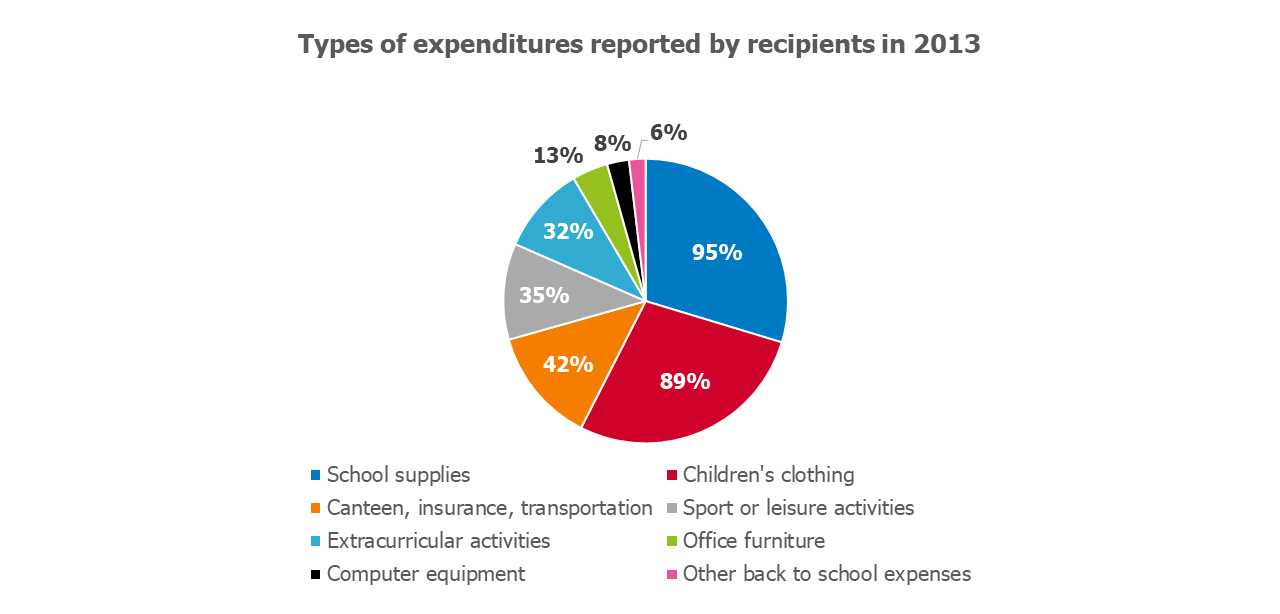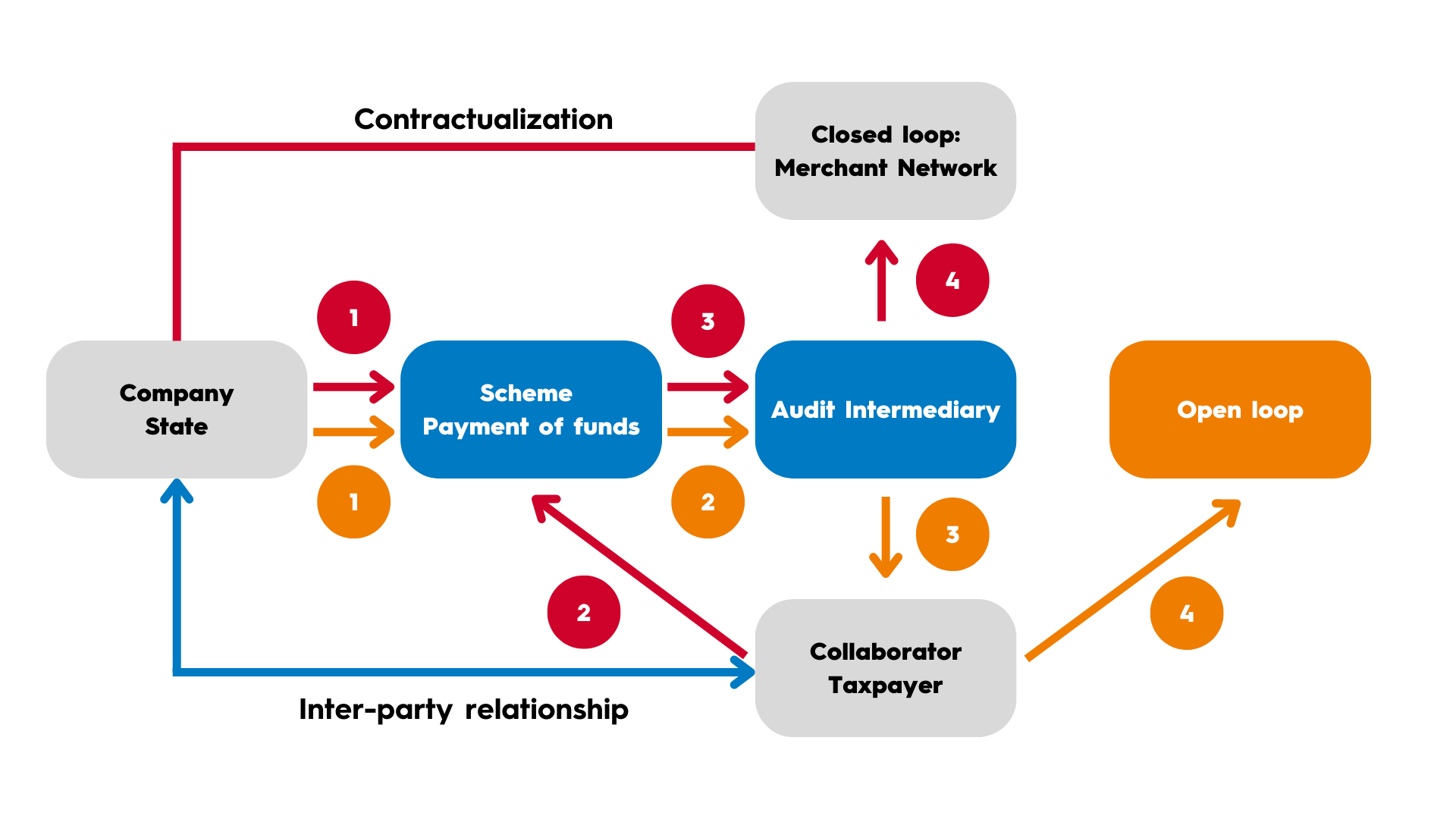Directed payment – Blockchain and Payment: Synergies to be leveraged – Part 2

Which context and why directed payment
Companies and the state pay many subsidies (in 2019 the French state spent 47 billion euros), sometimes these subsidies or public aid are intended to finance a certain type of good (back to school allowance) or a specific use (energy voucher). For this reason, payment systems called ‘closed loop‘ (or private label – determines a restricted field of use) in contrast to ‘open loop’ (universal instrument that can be used in an open network – e.g. Visa, MasterCard, Amex) have appeared.
An example of a closed loop system is the payment solution through wristbands at festivals, where consumers top up their wristbands from a web link, which allows them to make purchases at the event more easily afterwards. Only the points of sale on the festival can accept this payment instrument
Use cases and limitations
From a company point of view, the directed payment makes it possible to simplify expenses management while bringing a true added value to the collaborator (these expenses can in certain cases be exonerated of social contributions)
A public mandate
Description: The Government may require companies to pay assistance to their employees.
Example: Staff catering – The employer is mandated to pay for the catering of its staff by any means, one of them being the meal voucher.
The employee receives vouchers based on how many days worked, which can only be used at compatible food retailers up to a maximum of €25 per day. This voucher is distributed in the form of a payment card or an anonymous paper check.
Limitations:
- Use of funds: Complexity of reviewing the consumer basket content to analyze the type of purchased product (food or not)
- Targeting the beneficiary: Impossible to know who will really use the funds eventually: friends, family, exchange of the title for money, fraud …
Stimulate staff with benefits
Description: To reward employees, companies can pay them benefits at a defined merchant’s network.
Example: Holiday vouchers – The employer provides a voucher to his employees (financed by both parties) to be used in a defined network of retailers (tourism and leisure professionals). Once the voucher is distributed (now digitalized in a mobile wallet) the amount paid is valid for 2 years.
Limitations:
- Financing of the voucher: The employee must subscribe to the aid, which must be validated, and then finally pick up his or her voucher physically at the office or must prove his or her identity remotely to obtain the dematerialized voucher
- Checking the validity of the voucher: Notify the consumer of the instrument expiration or allow the merchant to check its validity
- Limited acceptance: only leisure and tourism professionals can accept these payment methods and obtain the corresponding funds from the Public Agency
Exempting employees from advance payment of expenses
Description: Employees experience many expenses and often must pay in advance before being reimbursed eventually by their employers.
Example: Sales representatives equipped with a corporate car often have to pay in advance the use of their professional vehicle (tolls, parking, washing, gasoline). Closed-loop corporate cards (such as fuel cards) have therefore been created to avoid these payments in advance.
Limitations:
- Use of funds: How to ensure expenses are only for business use
From a state point of view, public subsidies / aids have economic / societal stakes – helping the population for essential expenses (housing, food, …), boosting a sector or incitivizing the population towards good practices (ecology, transport, …)
Helping the population
Description: Subsidies are set up to help the population on specific categories of expenses (housing, energy, transportation, …) according to the household income to target only those who really need it and avoid windfall effects.
Example: The Allocation de “Rentrée Scolaire” (ARS) is a state aid to support the cost of children for households with limited income. This social aid is paid to more than three million households in France but is not closed loop.
Limitations:
- Granting of assistance: Verification of subscribers’ eligibility
- Use of funds: How to make sense of aid without directing it
N.B.: A study was conducted by the “Caisses d’allocations familiales” (CAF) in 2013 on the use of the back-to-school allowance. These surveys have limitations because they rely on the sincerity of the interviewed people declarations (no traceability).

Nudge
Description: The state influences the population behaviour through financial incentives.
Example: Ecological bonus for the purchase of an e-bike + conversion bonus: the state pays aid (under conditions) to use a green and healthy transport means (sport)
Limitations:
- Cash advance: The client (or even the seller) must advance the premium amount before validation and reimbursement
- Fraud: Example of carbon tax fraud – possibility of diverting funds as they are not conditioned
Stimulating the economy: the stimulus check
Description: To pay public aid with the aim of stimulating the economy and restart the cycle of purchasing power and all its economic derivatives.
Example: Within the framework of the “France Relance” plan, the “Chèque Relance Export” managed by Business France allows exporting companies to prepare for the recovery of the activity and to face the increased foreign competition.
This scheme is aimed at French SME for export projects taking place no later than 15 April 2023. The amount of aid will be limited to € 3,000
Limitations:
- Subscription to the aid: The subscriber must constitute a file which for the administrations before validation.
Identification of limitations – What are the needs
The above examples allow us to understand the current directed payment system limitations and convert them into an improvement need.
Diagram of the current system
Let’s try to build a generic diagram of how directed payment solutions work to date.

Two typical patterns:
Red path
The institution contracts with a network of merchants
- It uses a payment expert who issues a payment instrument provided to the individual
- When the employee initiates a purchase, the payment tool is used
- This scheme checks the conditions to see if the purchase can be made
- The payment is accepted
Orange path
The institution provides funds to the employee for this purpose
- An account to manage grants is created
- It verifies whether the employee is eligible
- The individual can then spend the money in any institution
Limits
We can list through this diagram the different flaws of the system that we can categorize in several large families:
- Intermediation:
- In the different cases, many actors must communicate with each other
- A network of acceptance must be set up with numerous contractualizations (which leaves very little room for competition)
- Multi-modularity:
- Each system offers its own payment tool (restaurant voucher card, paper or digital vouchers, etc.)
- Identity verification
- Users are not identified at the time of payment. Identity theft fraud is possible
- Use of funds
- Impossibility to review the basket content to identify the purchases (type of product / service purchased)
- No traceability on the use of funds -> possibility of fraudulent use or deviation from the initial objective
- No programmability of current payment systems – no ability to set conditions in a comprehensive or sequential manner
Needs
We can formalize through these limits the possible changes of the system and try to introduce a description of what could be the ‘optimal’ closed loop payment system.
- With less intermediaries
- Traceable and transparent
- Programmable and modifiable
- Multi-modular



